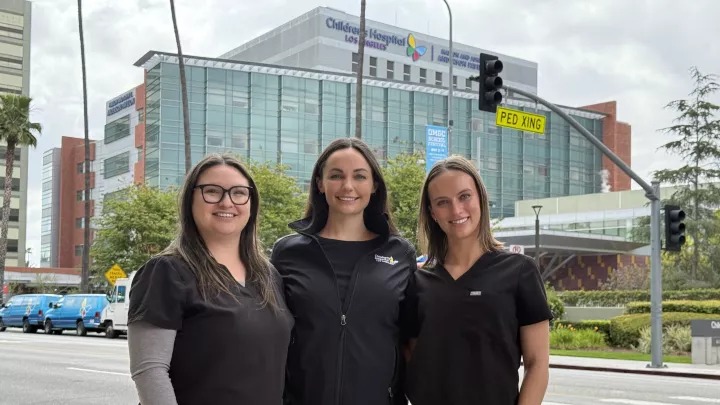Overview of the OTC Process
Creations of the mind, such as medical devices, therapeutic drugs, literary works, software programs and symbols (“Inventions”). Upon disclosure of an invention to the OTC, the team will process the invention by determining how best to protect it under the law as well as how to allow it to be transferred to another party. The four main legal protections that cover inventions are patents, copyrights, trademarks and trade secrets.
Four Types of Legal Protection
United States Patents
This is the exclusive right to exclude others from making, using, offering for sale, or selling an invention in the United States or importing an invention into the U.S.
Three Types of Patents
- Utility Patent – Any new or useful process, machine, article or manufacture, or composition of matter or any new and useful improvement
- Design – Any new, original, and ornamental design for article of manufacture
- Plant – A new and distinct variety of asexually reproducing plants
Utility Patents
A utility patent is not known to the public prior to the claim by the inventor. It is non-obvious and would not be recognizable to a person with familiarity with the art. It would also be a useful and practical activity.
Stages of Utility Patents
Stage 1: Provisional Application
- Establishes filing date
- Provides a one-year term to file a non-provisional patent application or PCT
- Does not get examined
- Can add more information before end of one year term if supported by original patent/publication
Stage 2: Non-provisional Application (U.S.)
- Full application with claims
- 20-year term if issued
Stage 3: Patent Cooperation Treaty Application (PCT)
- International application filed after provisional
- Gives additional 18 months to file national stage applications (Non-provisional in any country in the world)
- Gets examined but not binding on any country
Stage 4: Foreign Applications
- Country by country basis
- Translations typically required
Stage 5: Overall Time for issuance
- Typically between 2-4 years
- Patent term adjustments for delays by USPTO during examination or FDA approval
Utility Patent Process Road Map
Copyrights
Copyrights protect author’s original work such as books, article, computer software, source codes, websites, musical compositions, films, photographs, videos, and mobile applications. Copyrights are granted once the work of authorship is fixed in a tangible medium of expression. It protects the form of expression, though not the subject matter.
Trademarks
Trademarks protect words, phrases, symbols, designs or a combination of these that identifies the source of goods.
Trade Secrets
Trade secrets are a formula, pattern, physical device, idea, process or compilation of information that is generally not known that provides an economic advantage over others. Trade secrets are mainly protected through specific contractual measures.
OTC Evaluation
Evaluation and review of the ROI or ROC and OTC assesses market readiness and potential. Additionally, OTC reviews whether there is a publication tied to the ROI or ROC. If OTC agrees to file a patent, OTC attempts to file a provisional application as close to the publication date but before it publishes. Finally, OTC reviews the costs for patenting and who’s paying.
Commercial Agreements and Equity
When engaging an interested commercial partner for an Invention, OTC will typically offer an option agreement or license agreement. An option agreement grants an exclusive short-term time-right for a company to further evaluate a technology and does not include commercialization milestones or commercial products. The option agreement typically includes expenses such as option fees and patent costs, and the right to convert to a license agreement. A license agreement grants either a non-exclusive or exclusive right to the Invention to produce a commercial product. The license agreement will include commercialization milestones and revenue-related fees and terms. In some circumstances, OTC will take an equity stake in company in lieu of cash payments.
When to Contact the OTC
When an investigator has enough data to publish on an invention/copyright or is thinking about publishing, please contact the OTC before publishing by following the steps below:
- Fill out Record of Invention (ROI) or Record of Copyright (ROC)
- Sufficiently describe the invention or copyright
- Answer all questions and provide all relevant information
- Attach publication and provide submission status
- Sign the ROI or ROC
OTC and the Innovation Studio
The Innovation Studio at Children’s Hospital Los Angeles is committed to the growing use of technology in the development of health care solutions for children. It works with digital health, hospital processes and mobile apps (“Innovations”) even if they do not originate at CHLA. The Innovation Studio and OTC can overlap when Innovations originate at CHLA and are developed through the course of an individual’s employment or when CHLA’s resources are used. Though, the Innovations must reach a stage that allows for OTC to commercialize and monetize.
When is OTC Involved with Innovations?
- Can the Innovations be protectable as intellectual property (e.g. patents, copyrights, trade secrets) and subsequently transferred as an intangible transferable asset?
- Will the Innovations have a publication, data, a prototype, proof of concept, or significant software development and support in the future that de-risks and proves the Innovation?
If the criteria isn’t met, an individual can still work with the Innovation Studio to develop their Innovation, but OTC is rarely involved.
